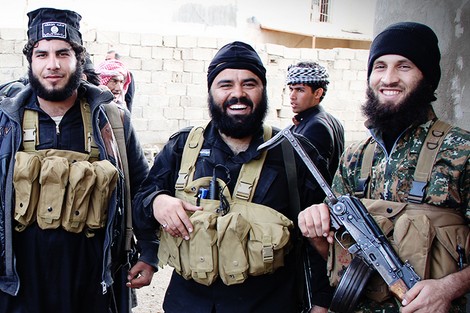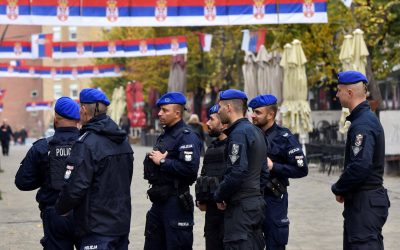Politico – The Muslim Brotherhood is a transnational Sunni Islamist movement that seeks to implement sharia (Islamic law) under a global caliphate. In 1942, Mustafa al-Sibai founded the Muslim Brotherhood in Syria as an extension of the Brotherhood in Egypt, which was founded by Hassan al-Banna in 1928. The Brotherhood in Syria is currently led by its comptroller general.
Mohammad Hikmat Walid, who has led the group since 2014. Some analysts also argue that the Brotherhood has served as the ideological forerunner of modern violent Islamist groups such as al-Qaeda and ISIS. The group has been labeled a terrorist organization by the governments of Bahrain, Egypt, Russia, Saudi Arabia, Syria, and the United Arab Emirates. (Sources: Carnegie Endowment for International Peace, Enab Baladi, Middle East Eye)
The Brotherhood has been politically active in Syria since 1946, represented by several members of parliament and participating in governments until 1963. When the Baath Party came to power, efforts were made to undermine the Brotherhood, culminating in a decision to ban its activities in 1964. In 1964.
Brotherhood member Marwan Hadid formed a violent offshoot—known as the Fighting Vanguard—whose members waged numerous terror attacks against the regime in the 1970s and early 1980s. At that time, armed Brotherhood members assassinated government officials and bombed government premises and Baath Party offices. (Sources: Carnegie Endowment for International Peace, Carnegie Middle East Center)
In 1970, Baathist Defense Minister Hafez al-Assad consolidated power among his sectarian minority—the Alawites—and assumed the Syrian presidency in 1971. In response, the Brotherhood sought to brand itself as the leader of Syria’s Sunni majority against what it perceived as the commandeering Shiite minority.
Pervasive corruption in Assad’s regime led to popular resentment and unrest across Syria. In 1975, Syrian authorities arrested Hadid, who died from a hunger strike in Syrian prison in 1976. In revenge for his death, the Fighting Vanguard launched an assassination campaign against top Syrian officials. Meanwhile.
in the late 1970s, the Brotherhood’s radical “northern axis” organized massive anti-regime demonstrations in the Syrian cities of Aleppo and Hama, whose residents reportedly felt disenfranchised. Throughout this time, the Brotherhood maintained ideological and organizational distinction from its violent offshoot.
(Sources: Carnegie Endowment for International Peace, Al Monitor, Asad: The Struggle for the Middle East by Patrick Seale (p. 324), Ashes of Hama: The Muslim Brotherhood in Syria by Raphael Lefevre (p. 57), Inside the Brotherhood in Syria by Hazem Kandil (p. 156))
In 1975, Adnan Saad al-Din of Hama was elected supreme guide of the Brotherhood. Under his leadership, the movement was reorganized and developed into a sophisticated hierarchical organization with offices, formal mechanisms, and a clear division of labor. Furthermore, the Brotherhood developed a military wing and launched jihad to turn Syria into a sharia state.
From the winter of 1976 until the summer of 1979, various groups affiliated with the Brotherhood attacked high-ranking members of the state, the Baath Party, the Alawite sect, and even isolated military positions and camps. In 1979, the Fighting Vanguard defected from the Brotherhood to take up arms against the regime.
and it launched an attack in which 83 Alawite student officers were killed at the military artillery school in Aleppo. In June 1980, Brotherhood members attempted to assassinate Assad using grenades and machine guns. Assad’s government launched a crackdown on the group and gunned down hundreds of Brotherhood members in their prison cells.
These events prompted then-President Hafez al-Assad to issue, in 1980, Law 49 banning the Muslim Brotherhood and imposing the death penalty on its members. (Source: Carnegie Endowment for International Peace)
Violence continued until the launch of a large-scale military operation by the regime against the Fighting Vanguard in Hama in February 1982 in which 10,000 to 25,000 of the city’s inhabitants were killed. The Brotherhood then withdrew from political life in Syria. Its surviving leaders and many of its members were exiled. In 1982.
in order to quell a Brotherhood uprising in the city of Hama, Hafez al-Assad dealt a near-fatal blow to the group, killing between 10,000 and 40,000 armed Brotherhood members and civilians. The group was nearly incapacitated as surviving Brotherhood leaders fled into exile. (Sources: Carnegie Endowment for International Peace, Carnegie Endowment for International Peace, Carnegie Endowment for International Peace, Middle East Policy Council, Al Monitor, Middle East Voices, Wilson Center)
During the 1990s and 2000s, however, the Brotherhood—still in exile—sought to rebrand itself as a non-violent, politically minded group. As popular protests erupted in Syria in March 2011, the Brotherhood remobilized and moved to consolidate political and military power among the opposition.
Amid the ensuing tumult of the civil war, the Brotherhood established recruitment offices and urged its members in large Syrian cities to return to smaller communities and reconnect with the citizens there. The Brotherhood found success in recruiting members from rebel-held areas of Syria, especially in and near Aleppo.
In spring 2015, Reuters reported that hundreds of Syrian Brotherhood members had returned to Syria from exile. Membership in the organization remains punishable by death, though the Brotherhood largely operates in opposition-held areas including in Aleppo, Idlib, and Hama. Indeed, the Brotherhood remains sidelined and ineffective as jihadist organizations increasingly dominate the Syrian opposition. (Sources: Carnegie Endowment, National, Reuters).




